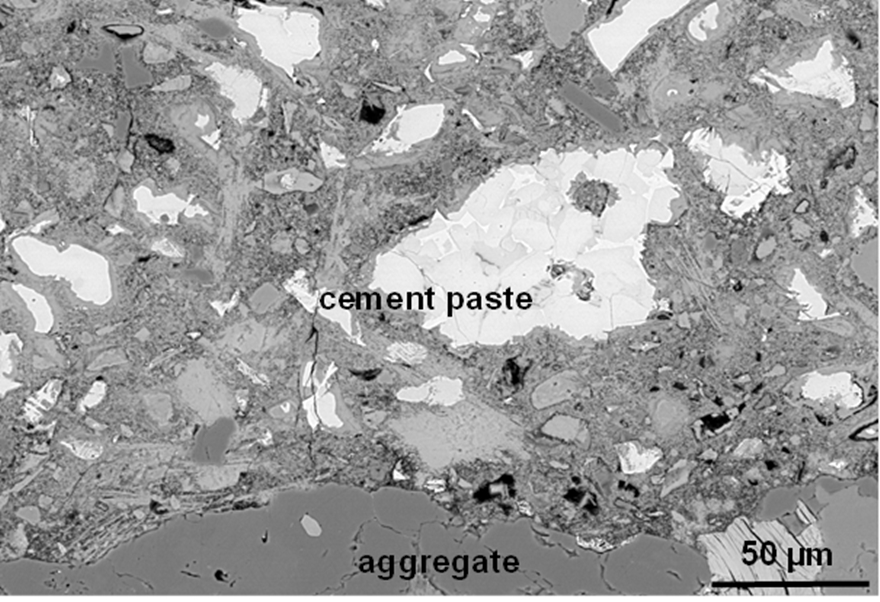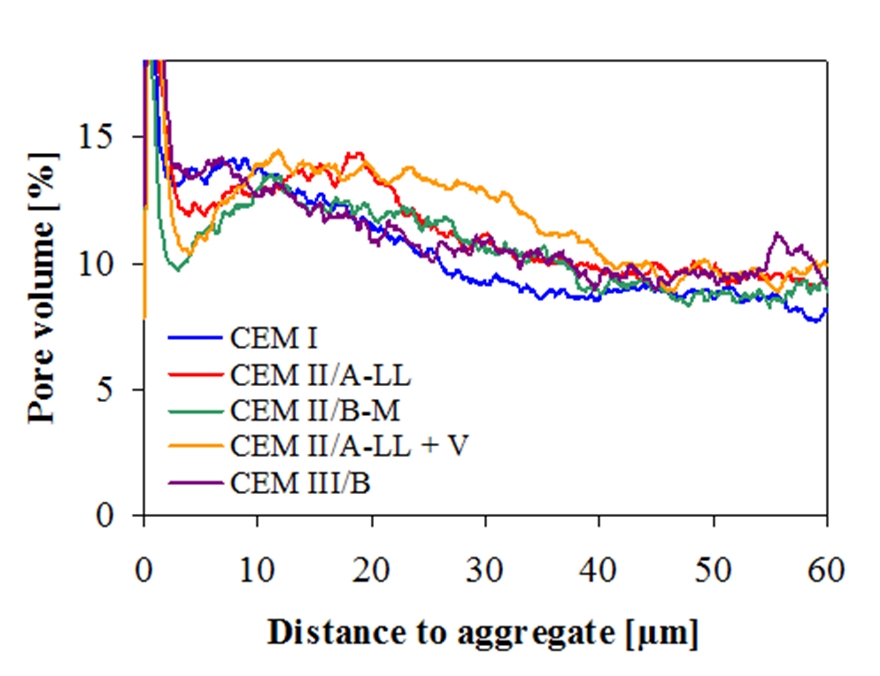Porosity and Diffusivity
The porosity governs the transport of gases and liquids and as such is decisive for the durability of cementitious materials. The porosity is characterized by total porosity, pore size distribution, connectivity of pores, diameter of the pore necks, tortuosity and the porosity in the interfacial transition zone (ITZ) to the aggregates. The characterization of the pore network is challenging due to its complexity, therefore only a multi-method approach leads to meaningful results. Nitrogen adsorption (BET) and mercury intrusion porosimetry (MIP) are used to determine total porosity and pore size distribution of the bulk material. Oxygen and carbon dioxide diffusion are applied to characterize the transport of gases. Various saturation and drying procedures are used to get information about the transport of liquids. Scanning electron microscopy combined with image analysis permits to get information about the form and spatial distribution of pores in the bulk cement paste and in the ITZ.

Important publications
- Leemann, A., Loser, R., Münch, B., & Lura, P. (2017). Steady-state O2 and CO2 diffusion in carbonated mortars produced with blended cements. Materials and Structures, 50(6), 247.
- Leemann, A., Loser, R., & Münch, B. (2010). Influence of cement type on ITZ porosity and chloride resistance of self-compacting concrete. Cement and Concrete Composites, 32(2), 116-120.
- Kaufmann, J., Loser, R., & Leemann, A. (2009). Analysis of cement-bonded materials by multi-cycle mercury intrusion and nitrogen sorption. Journal of Colloid and Interface Science, 336(2), 730-737.
- Leemann, A., Münch, B., Gasser, P., & Holzer, L. (2006). Influence of compaction on the interfacial transition zone and the permeability of concrete. Cement and Concrete Research, 36(8), 1425-1433.


-
Share
